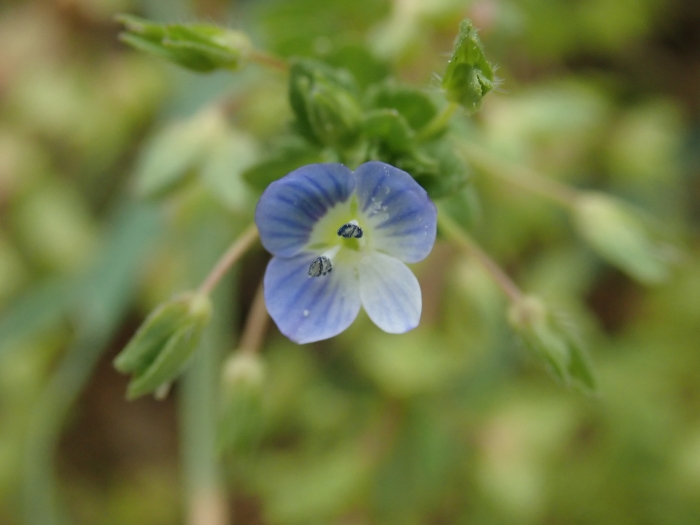Birdeye Speedwell
(Veronica persica)
Birdeye Speedwell (Veronica persica)
/
/

agujaceratops
CC BY 4.0
Image By:
agujaceratops
Recorded By:
Copyright:
CC BY 4.0
Copyright Notice:
Photo by: agujaceratops | License Type: CC BY 4.0 | License URL: http://creativecommons.org/licenses/by/4.0/ | Rights Holder: agujaceratops | Publisher: iNaturalist | Date Created: 2020-04-28T14:03:06-07:00 |

























Estimated Native Range
Summary
Veronica persica, commonly known as Birdeye Speedwell, is an annual herbaceous plant originally native to Eurasia but now widespread in the British Isles, North America, Eastern Asia, Australia, and New Zealand. It typically forms a dense, prostrate groundcover with weak stems that can reach up to 50 centimeters in length. The plant is characterized by its small, sky-blue flowers, about one centimeter wide, which bloom from early spring to autumn, adding a delicate touch to its settings. Birdeye Speedwell thrives in open fields, lawns, and disturbed sites, often preferring moist conditions and loamy soil.
Birdeye Speedwell is valued for its ability to quickly cover bare ground, making it useful for erosion control and as a filler in garden beds or borders. Its ease of maintenance and tolerance of a range of soil types contribute to its popularity in cultivation. However, it requires moderate watering and can grow in both full sun and partial shade. While it can be a charming addition to gardens, Veronica persica is known to be invasive in some regions, outcompeting native flora. Gardeners should be cautious and check local regulations before planting to ensure it is not problematic in their area.CC BY-SA 4.0
Birdeye Speedwell is valued for its ability to quickly cover bare ground, making it useful for erosion control and as a filler in garden beds or borders. Its ease of maintenance and tolerance of a range of soil types contribute to its popularity in cultivation. However, it requires moderate watering and can grow in both full sun and partial shade. While it can be a charming addition to gardens, Veronica persica is known to be invasive in some regions, outcompeting native flora. Gardeners should be cautious and check local regulations before planting to ensure it is not problematic in their area.CC BY-SA 4.0
Plant Description
- Plant Type: Herb
- Height: 0.3-0.6 feet
- Width: 0.3-1 feet
- Growth Rate: Moderate, Rapid
- Flower Color: Blue, Purple
- Flowering Season: Spring
- Leaf Retention: Deciduous
Growth Requirements
- Sun: Full Sun
- Water: Medium
- Drainage: Medium
Common Uses
Low Maintenance
Natural Habitat
Originally native to Eurasia but now also found in open fields, lawns, and disturbed sites across various regions
Other Names
Common Names: Winter Speedwell, Bird’s-eye Speedwell
Scientific Names: , Veronica persica, Cardia filiformis, Pocilla persica, Veronica agrestis var. byzantina, Veronica alpiphila, Veronica areolata, Veronica buxbaumii, Veronica buxbaumii var. kochiana, Veronica byzantina
GBIF Accepted Name: